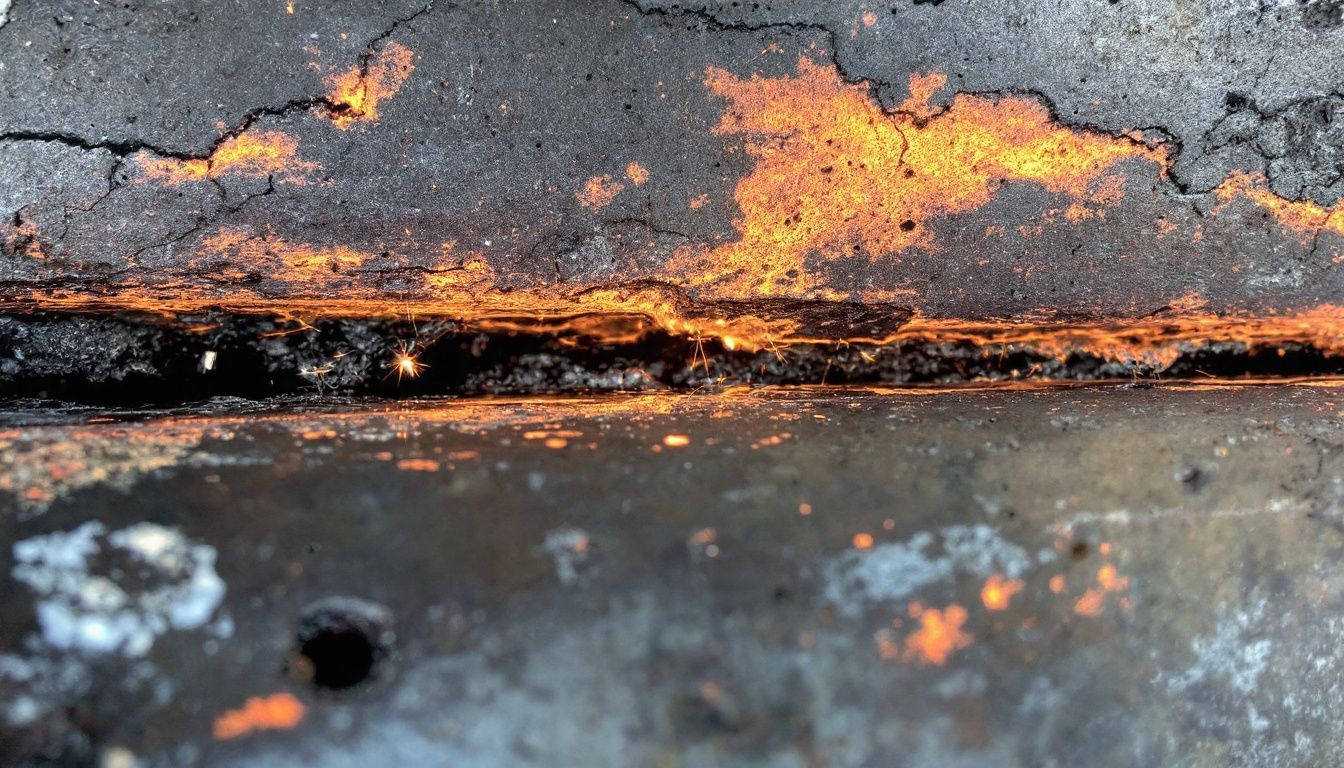Weld defects can cause major issues, weakening your projects and leading to costly rework. Common weld defects like porosity and cracks often result from incorrect welding parameters or improper techniques.
This article explores the causes and remedies for preventing common welding defects, along with essential welding tips. Read on to ensure your welds are flawless.
Key Takeaways
- Choose the Right Materials
- Use low hydrogen filler metals like H4 or H8.
- Match filler metal strength to the base material.
- Proper storage keeps metals clean and prevents defects.
- Use Proper Techniques and Settings
- Design joints correctly with the right bead ratio.
- Control voltage and welding speed.
- Apply correct preheat and post-weld heating.
- Maintain a Clean Work Area
- Keep welding surfaces free from dirt and rust.
- Handle filler metals in clean, dry conditions.
- Regularly inspect and maintain welding equipment.
- Detect and Fix Defects Early
- Use visual inspections and other testing methods.
- Check for cracks, porosity, and incomplete fusion.
- Address problems quickly to ensure strong welds.
- Train and Follow Best Practices
- Provide thorough training for all welders.
- Stay updated with the latest welding techniques.
- Follow best practices to ensure high-quality welds.
Common Welding Defects and Their Causes

Common welding defects can weaken the strength of a weld. Hot cracking occurs when the metal cools too quickly, often because of poor joint design. Cold cracking happens in ferritic steels and is caused by hydrogen entering the weld.
Lack of sidewall fusion and slag inclusions are other common types of weld defects. Porosity forms when gas gets trapped in the weld metal. External issues like undercut, spatter, and warping also reduce weld quality.
Inside the weld pool, inadequate penetration and incomplete fusion lead to internal welding defects. Slag inclusions happen when impurities stay trapped in the weld. Cold lap defects occur when the weld metal doesn’t fully fuse with the base metal.
Improper welding parameters, such as incorrect voltage or welding current, and contamination from rust or paint can cause these defects. Understanding these causes helps avoid weld defects and ensures strong, reliable welds.
Remedies for Common Welding Defects
Welding defects can weaken structures and lead to failures. Addressing these issues ensures strong and reliable welds.
- Use Low Hydrogen Filler Metals
- Select H4 or H8 filler metals with less than 4 ml or 8 ml of hydrogen per 100 g of weld metal. This prevents hydrogen-induced cracking, also known as cold cracking.
- Ensure Proper Joint Design and Fit-Up
- Design joints with a bead depth-to-width ratio between 5:1 and 2:1. Proper fit-up reduces the risk of hot cracking and ensures strong weld joints.
- Preheat and Post-Weld Materials Correctly
- Apply appropriate preheating before welding and allow materials to cool slowly after welding. This manages residual stresses and prevents cracking in the weld.
- Match Filler Metal Strength to Base Material
- Use filler metals that have similar strength properties to the base materials. Matching strengths minimizes the risk of weld failure under stress.
- Store and Handle Filler Metals Properly
- Keep filler metals in clean, dry environments to avoid contamination. Proper storage ensures the integrity of the weld and prevents defects caused by impurities.
- Adjust Welding Parameters Appropriately
- Control welding parameters like voltage and welding speed. Correct settings help achieve the desired weld bead shape and prevent defects such as porosity and incomplete fusion.
- Use Correct Welding Techniques
- Employ techniques like TIG and stick welding accurately. Proper welding techniques ensure consistent weld quality and reduce the occurrence of defects.
- Apply Shielding Gas Effectively
- Use the right type and flow rate of shielding gas to protect the weld pool from contamination. Effective shielding gas application prevents oxidation and other surface defects.
By implementing these remedies, welders can significantly reduce common welding defects and enhance the quality of their work.
Welding Tips for Flawless Welds
Mastering the right electrode angles and adjusting welding parameters ensures flawless welds—explore more expert tips below.
Energy Efficient Welding Tips
Choose energy-efficient welding machines like MIG and TIG systems. Adjust voltage and current to fit your welding process. Proper settings use less energy and create strong welds. Select the right electrode for each job to optimize performance.
Keep your welding equipment maintained to ensure it runs efficiently.
Optimize your welding technique to save energy. Use numerical control machines for precise welding patterns. Reducing excess heat helps prevent defects and lowers energy use. Train welders on energy-efficient methods.
These tips enhance weld quality and make your welding operations more sustainable.
How to Detect Welding Defects
Finding weld defects keeps structures safe and strong. Methods like ultrasound and radiography check for problems without harming the metal.
Non-Destructive Testing Methods
Non-destructive testing finds weld defects without harming the weld. These methods keep welds strong and safe.
- Visual Inspections: Look at the weld surface for cracks, porosity, or other visible issues. This simple check helps find external defects early.
- Liquid Penetrant Testing: Apply a dye to the weld. The dye travels into surface cracks and shows them under UV light, making defects easy to see.
- Magnetic Particle Inspection: Use magnets and iron particles on the weld. Particles gather where there are flaws, revealing hidden defects.
- Ultrasonic Testing: Send sound waves into the weld. Reflections from internal flaws like fractures or voids show where defects are.
- Radiography: Use X-rays or gamma rays to create images of the weld. This method shows internal defects that are not visible on the surface.
- Dye Penetrant Inspection: Similar to liquid penetrant, this method uses dye to highlight surface cracks. It makes small defects easier to detect.
These non-destructive testing methods help maintain high-quality welds and prevent weak spots in the structure.
Destructive Testing Methods
Destructive testing methods check the weld by damaging it. These tests ensure weld quality by finding hidden defects.
- Bend Tests
- Bend the weld to assess its strength.
- Detect incomplete fusion and poor penetration.
- Identify cracks that may weaken the weld.
- Confirm the strength of the weld meets safety standards.
- Acid Etching
- Apply acid to the weld surface.
- Reveal internal anomalies like oxides and casting defects.
- Examine the microstructure of the weld metal.
- Detect issues trapped in the weld pool.
Preventive Strategies for Welding Defects
Preventing welding defects is key to ensuring strong and safe welds. Implement these strategies to minimize common issues.
- Use Low Hydrogen Filler Metals: Select filler metals with low hydrogen content to reduce hydrogen-induced cracking. This choice enhances the strength and reliability of the weld.
- Ensure Proper Fit-Up and Joint Design: Align materials accurately and design joints to minimize stress points. Proper fit-up helps prevent hot cracking during the welding process.
- Control Preheat and Post-Weld Heating: Apply the right amount of preheat before welding and perform post-weld heat treatments. Managing temperatures helps control residual stresses and avoids cracking.
- Match Filler and Base Material Strengths: Choose filler metals that have similar strength to the base materials. Matching strengths lowers the risk of weld failure under stress.
- Store and Handle Filler Metals Correctly: Keep filler metals dry and protected from contaminants. Proper storage prevents impurities from weakening the weld.
- Train Operators Thoroughly: Provide comprehensive training for welders on proper techniques and defect troubleshooting. Skilled operators are essential for producing high-quality welds.
Next, we will explore the best practices in welding.
Best Practices in Welding
Building on preventive strategies, adopting best practices ensures strong and reliable welds. Follow these guidelines to enhance your welding quality:
- Inspect Equipment Regularly
Ensure all welding tools and machines are in good condition. Regular checks help identify issues before they cause defects. - Maintain a Clean Work Area
Keep the welding surface free from dirt and contaminants. A clean environment prevents poor welds and reduces defects. - Use Proper Welding Techniques
Apply the correct methods for each type of welding, such as MIG or TIG welding. Proper techniques minimize errors and enhance weld quality. - Monitor Welding Parameters
Adjust settings like voltage and current according to the material and weld type. Accurate parameters prevent issues like cracking and improper fusion. - Pursue Ongoing Training
Stay updated with the latest welding technologies and methods. Continuous education improves your skills and adapts to industry advancements. - Upgrade Welding Technology
Invest in modern welding equipment and tools. Advanced technology increases efficiency and produces higher quality welds. - Engage in Collaborative Learning
Participate in workshops and community forums. Sharing knowledge with others helps you learn new tips and solve welding challenges. - Perform Regular Maintenance
Keep welding machines and tools well-maintained. Proper maintenance extends equipment life and ensures consistent welding performance.
Implementing these best practices leads to fewer weld defects and stronger, safer structures.
Conclusion
Understanding what causes weld defects is the first step to preventing them. Use the right techniques and materials for each job. Regularly check your work to find and fix problems early.
Follow best practices to ensure your welds are strong and safe. Good welding keeps your projects on track and reliable.
FAQs
1. What are the five common welding defects and how can I prevent them?
The five common welding defects include cracks, porosity, incomplete fusion, undercut, and distortion. To prevent these defects, use the proper welding technique, adjust welding parameters such as voltage, and ensure correct welding patterns. Regularly check welding defects using nondestructive testing and maintain the quality of the weld by avoiding excessive welding current.
2. How does improper welding technique cause weld defects?
Improper welding technique can lead to several defects like incorrect welding patterns and discontinuities in the weld. These defects occur when the weld metal fails to properly fuse, causing weaknesses. To avoid this, use the proper welding technique and ensure correct welding parameters. This helps maintain the integrity and strength of the weld.
3. What role does welding parameters play in preventing defects?
Welding parameters such as voltage, current, and speed are crucial in preventing defects. Incorrect parameters can cause issues like porosity, cracks, and incomplete fusion. By carefully adjusting the welding parameters, you can ensure proper fusion occurs when the weld metal is deposited, reducing the chances of defects and enhancing the quality of the weld.
4. How can nondestructive testing help in identifying welding defects?
Nondestructive testing (NDT) methods allow you to check welding defects without damaging the weld. Techniques like ultrasonic testing and X-ray inspections can detect subsurface defects and discontinuities throughout the weld. Regular NDT ensures that any defects are identified early, allowing you to take corrective actions and maintain the structural integrity of the weld.
5. What are some welding tips to prevent distortion and cracking?
To prevent distortion and cracking, use proper welding techniques and control the heat input by adjusting welding parameters. Preheat the materials if necessary and use welding methods like gas tungsten arc welding or shielded metal arc welding for better control. Additionally, minimize stress by allowing the weld to cool slowly and support the workpiece to reduce movement during welding.
6. How can understanding the causes of weld defects improve welding quality?
Understanding the causes of weld defects, such as stress, contamination, and incorrect welding parameters, helps in implementing effective remedies. By knowing why defects occur, you can take steps to prevent them, such as cleaning the weld area, using the right welding technique, and monitoring welding parameters. This knowledge leads to higher quality welds and fewer defects in your manufacturing process.
On-Site Mobile Welding Solutions
For expert mobile welding, contact us at (623) 263-0277. Visit us today for reliable on-site welding services that come directly to you!

